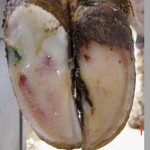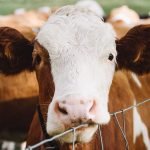
Popular Posts
Recent Posts
Get ahead of heat stress this summer
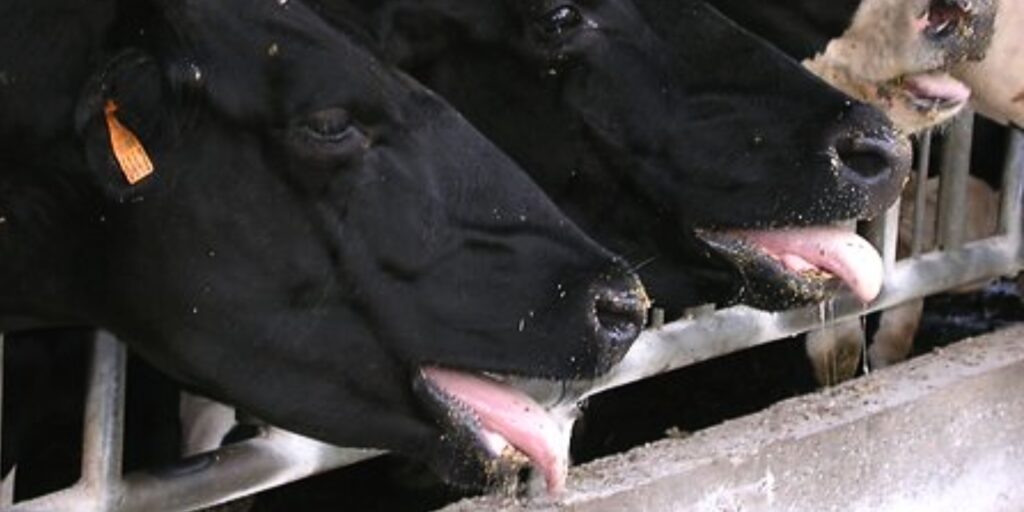
When summer temperatures are pulling out all the stops, animals that are out in the sun and heat during the day often experience problems. For instance, air temperature, humidity and the amount of direct sunlight affect an animal’s body temperature. When summer temperatures continue to rise, it is important to avoid heat stress as it can contribute to lameness in dairy cows.
Causes and symptoms of heat stress
The following signs and symptoms may indicate heat stress:
- Excessive standing: A cow’s natural response to heat during the hot summer season is to stand up. They do this because they produce heat when they lie down in stalls. Therefore, excessive standing, grouping and huddling of a herd are visible signs of heat stress. As heat stress progresses, cows generally stand for three to four hours a day more than normal and refuse to lie down.
- Increased Respiratory Rate: Cows sweat diferently and alleviate their body heat. Therefore, they often start breathing laboriously or with open mouth and panting to get cooler air into the body. In heat stress, the cow will have increased breathing with excessive salivation or drooling.
- Behavioural and activity changes: Similar to a human’s reaction to extreme heat, cows alter their behavior to reduce stress when exposed to extreme temperatures. Like a human, when a cow experiences heat stress, its activity and energy levels decrease. If a cow appears agitated, restless and, in extreme cases, lame, heat stress may be the cause. Other changes in behavior include reduced feed intake and increased water intake.
Heat stress and lameness problems
During extreme temperatures, cows stand to allow more of their surface area to disperse heat into the air. Although cows are tough, their heavy bodies cannot withstand long periods of standing.
The extra pressure from excess standing affect the integrity of the hoof and restrict the blood flow and oxygen needed to maintain healthy hooves. As a result, cows are more prone to injuries and infectious claw lesions as they put extra pressure on their hooves.
Blocking can help regardless of the injury or condition to keep milk production moving. Hoof care professionals place a rubber block on a healthy claw to elevate and restrict the affected claw. This treatment option will elevate the injured claw off the ground, and it will heal faster and alleviate pain. Rubber blocks from Bovi-Bond™ provide the necessary traction and cushion hooves need for a dairy cow to stay comfortable and avoid injury during the healing process.
Different adhere blocks can be used on the claws to increase the cow’s comfort level. Bovi-Bond™ from Vettec is a proprietary two-part polyurethane adhesive that bonds rubber blocks to a cow’s claw. It has a fast, 30-second set time and a strong bond to keep blocks in place.
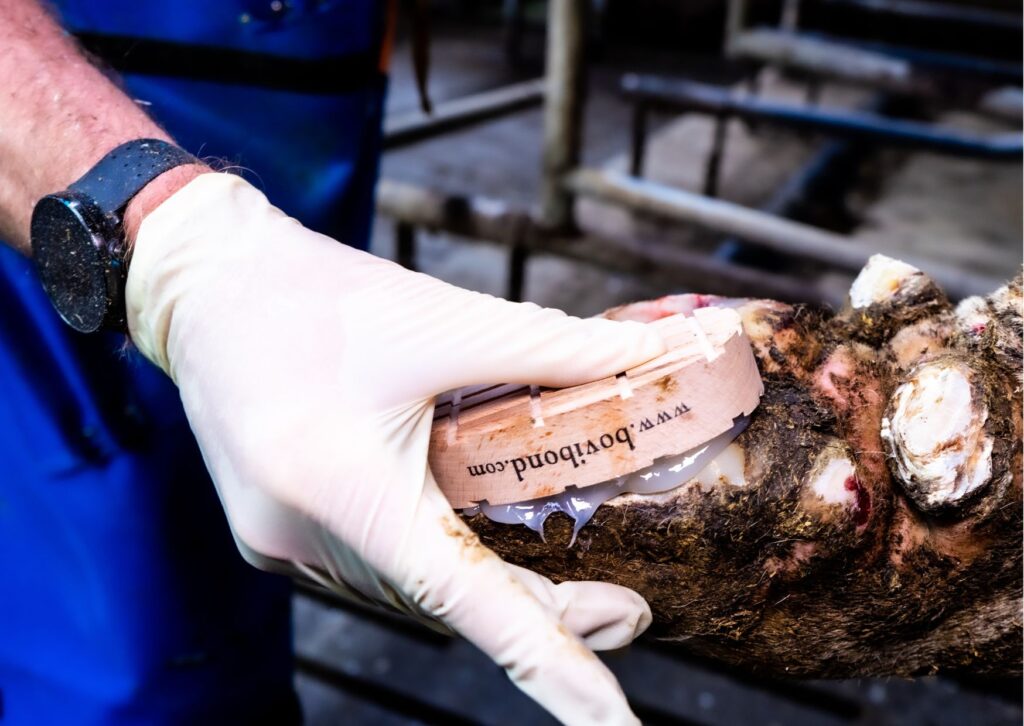
| For best results, only apply the necessary amount of glue to hold the block firmly to the foot. Spreading the adhesive evenly across the block ensures the glue will dries smoothly and reduce the chance of sharp edges forming that could perforate the cow’s heel. Blocking helps make the cow more comfortable and, therefore, allows farms to maintain optimal milk production. |
Managing Heat Stress
There are different tips and techniques farmers and hoof care professionals can use on dairy cows to prevent heat stress and lameness. Some examples include:
- Maintain regular cool off periods and keep cows inactive until temperatures decline.
- Alter milking and trimming routines to avoid additional headlock time. Mornings and nights are the best times for herd movements to minimize exposure to peak heat hours.
- Install sprinklers, misters and barn fans for ventilation.
- Create shade in outdoor environments to provide more comfort.
- Provide readily-available water sources within in short walking distances.
- Make sure the herd receives vital nutrients with continued feeding periods to maintain milk production. Discuss any adjustments to feed ratios with a nutritionist.
- Pay extra attention to calves in the warmer months to keep them happy and healthy.
As summer temperatures increase standing time and the possible onset of heat stress, dairy farmers tend to see more cows experiencing lameness in the fall. Talk to your hoof care professional about the importance of adopting a good hoof care protocol during summer months, and the best options for your dairy environment.
Discover more about hoof blocks and adhesives
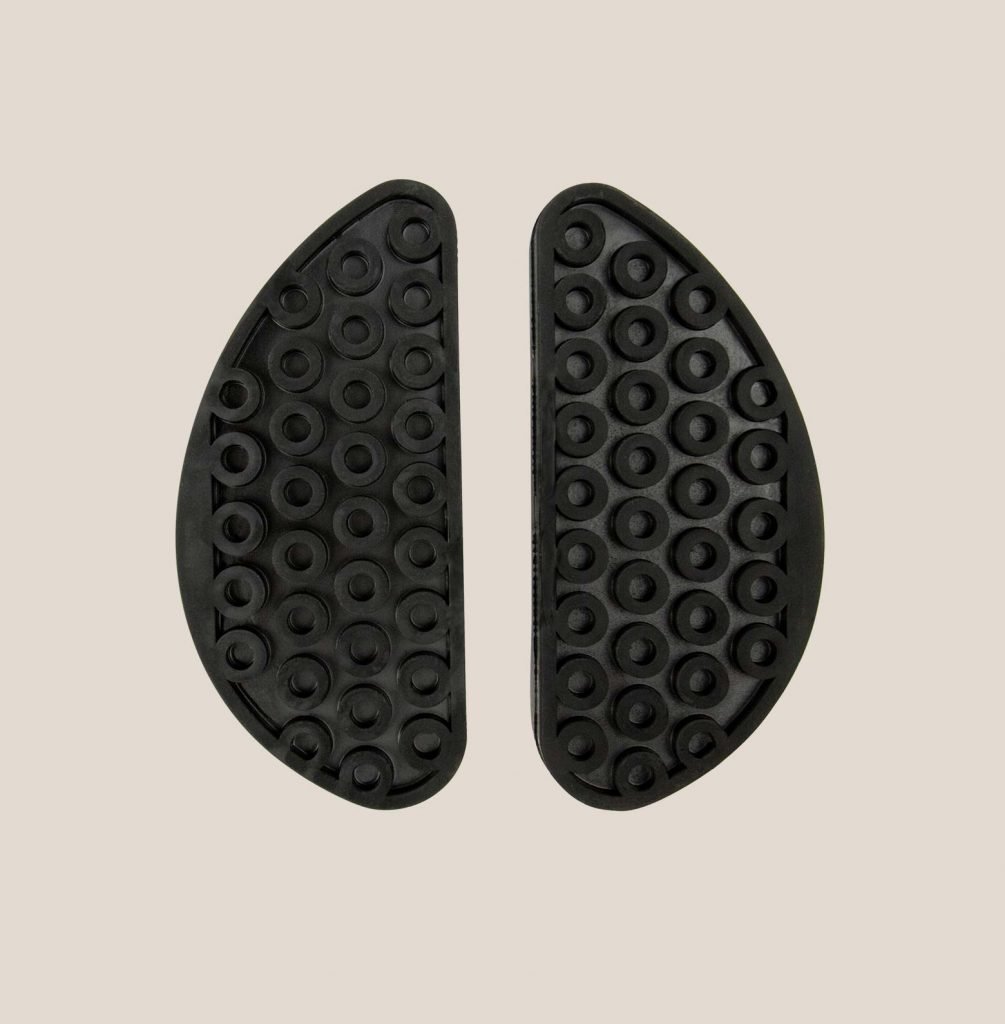
Wood, rubber or Pu… Which block do you choose best?
Discover the different types of hoof blocks to choose the perfect block in every situation.
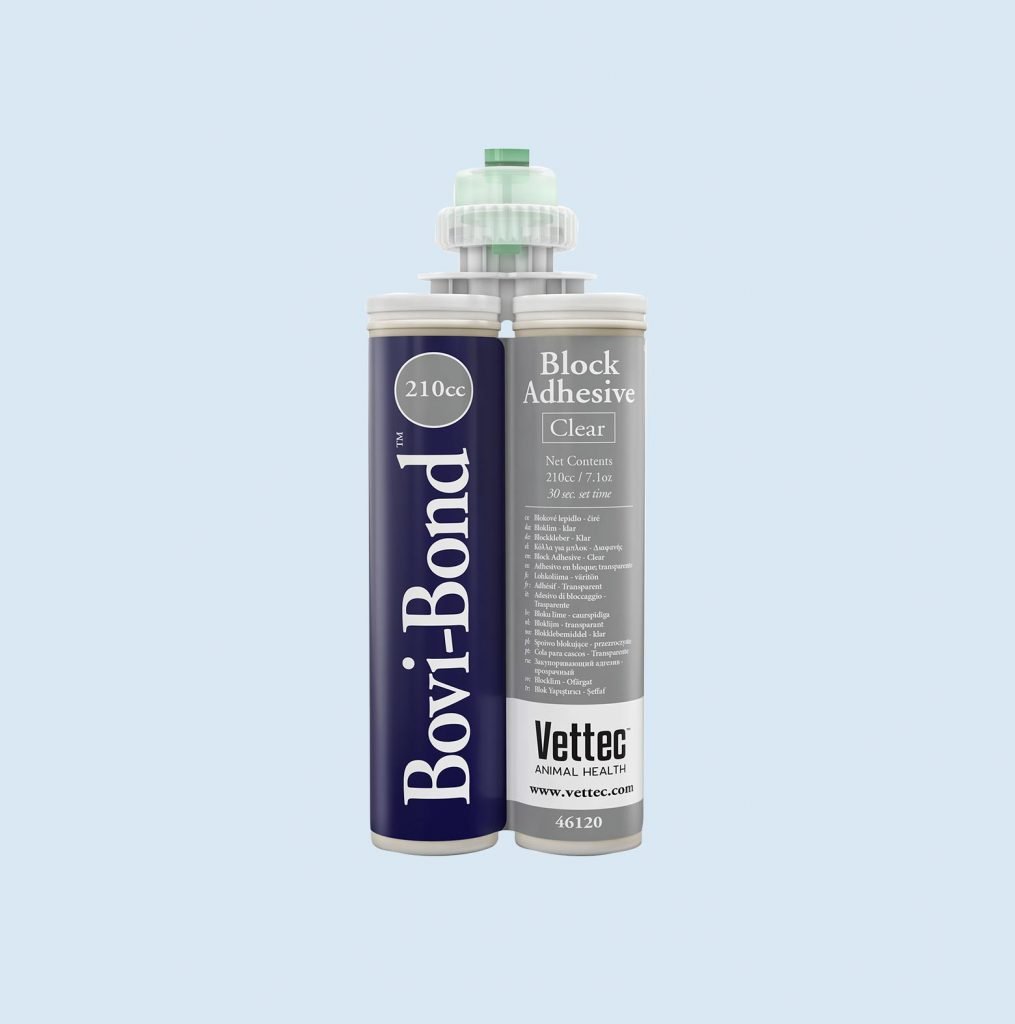
Why choose the Bovi-Bond adhesive?
An adhesive is an adhesive you might think, but nothing could be further from the truth. After all, you do want to attach that block on the claw easily, safely and and durably.

